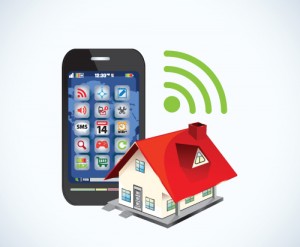 Recent studies have suggested that the more connectivity and mobile features a can offer homeowners, the more likely they are to buy it and also suggest that company to other people. This data suggests that affordability is not the only key selling point when it comes to . In this age ofever-increasing technology, the more mobile options and apps a person has access to, the more likely they are to buy the technology associated with them.
Recent studies have suggested that the more connectivity and mobile features a can offer homeowners, the more likely they are to buy it and also suggest that company to other people. This data suggests that affordability is not the only key selling point when it comes to . In this age ofever-increasing technology, the more mobile options and apps a person has access to, the more likely they are to buy the technology associated with them.
Tom Kerber, a research director of home controls and energy, says:
The connected home is now possible because the infrastructure is in place and [ . . . ] 75 percent of homes in the United States with a broadband connection make up the total addressable market for connected home opportunity. Also, [. . .] about 80 percent of households now own a smartphone—the user interface that enables connected home services. The reduction in the cost of storage for data that comes off these [smart home] devices now can be used to create new functions and services. … Every connected device is now a streaming device for data.”
The fact that most homes now have some means of mobile connectivity is proof that most American families are living a lifestyle of connectivity and would want their to have those same features. As recently as five or ten years ago, security systems were limited in what they could transmit to the homeowner and could only contact the company or authorities when the alarm was tripped. Today, homeowners can control the home’s environment, monitor doorways from their cellphones and tablets, and even receive text alarms when the system is tripped.
In the same survey, homeowners said they would be more likely to purchase security systems or safety devices if they were able to control them with a mobile phone or other device, such as a tablet or laptop. Surprisingly, cost was less of an issue than connectivity, suggesting that the average American is willing to spend more money for systems they can control with ease and convenience. Because this is an obvious selling point in today’s market, companies that can offer these features are going to have an edge over those that are still operating on a system which can only contact the company when an alarm is tripped.

Emily Stevenson
Author – Emily is a 10 year veteran of the home security industry working in sales. She was a top sales person at leading home security companies, but has shifted her focus to working on helping consumers make theright decisions.

